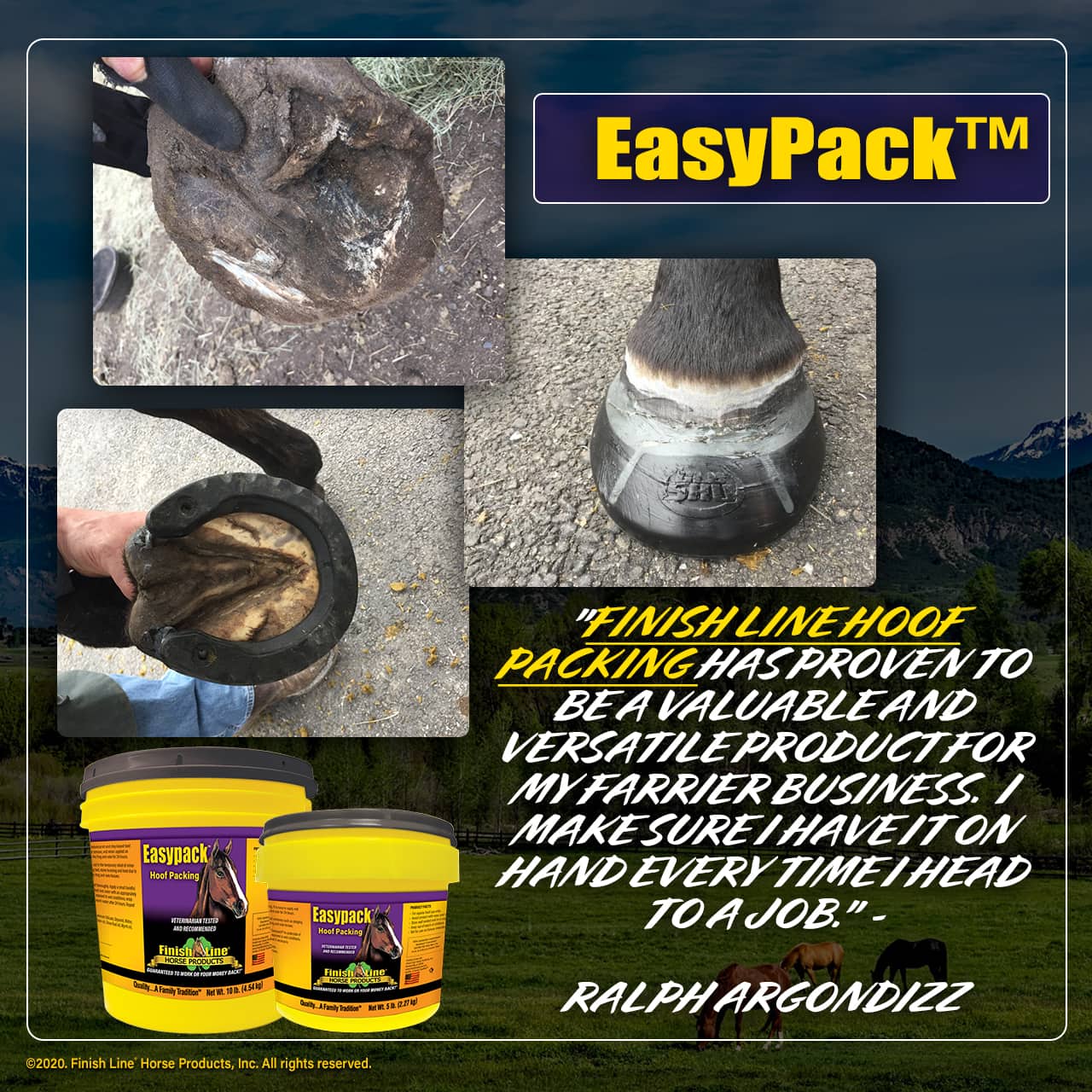Every owner fears of their horse becoming lame. It can be a sign of something simple, like a stone bruise, or a sign of something game changing, such as laminitis. Spotting lameness early on can help your horse get the medical attention it may need and prevent further issues. Watch your horse for these signs of lameness:
From the ground
While your horse is standing, always keep an eye on how it rests its feet. If the front foot is resting on the tip of its toe, you may have a problem on your hands. It is normal for horses to rest their hind feet in this way, but not the front.It is important to pick out your horse’s hooves regularly. While doing this, you can spot potential issues, such as rocks or sharp objects that are lodged in the hoof’s crevices. It is also a good way to check for stone bruises or possible abscess issues. If your horse is refusing to lift one of its feet, it could be indicating there is a problem with the opposite hoof and the horse is reluctant to put its full pressure on it.
Other signs to look for are changes in behavior. For example, if your horse normally loves to run around with its pasture mates, but is suddenly listless and not moving around as much, it could be lame. Pain can cause irritability in horses. Reduction in appetite is also a sign that something is off.
On the lunge line
As you begin to suspect there may be an issue, it is smart to lunge your horse and see how it moves. While watching your horse lookout for the different movements it may be making.
- Keep an eye out for head bobbing. This is a sign that the horse is trying to keep pressure off of his front legs. Horses tend to raise their head up when putting down the injured leg.
- Your horse’s hip and hock are the keys to spotting lameness in the hind legs, according to Horse and Hound. The horse will carry its hip slightly higher when trying to avoid pain in its leg.
- Note where your horse is moving. If you are in a ring with sand, the horse may try to stay to the inside or outside of the track. The sand around the outer track is usually less compact than the track, making it softer on the horse’s feet.
Under saddle
Like being on the lunge line, a trainer or friend can spot the aforementioned signs while you are riding. While in the saddle, it can be hard to feel a limp, but there are signs to look for. If your horse’s pace seems abnormal or it is reluctant to do its usual work, these are signs your horse could be in pain. Trail Rider Magazine suggested listening to your horse’s hoof beats. They should be an even and steady pace. If one hoof seems to be making less noise than the others, the horse is not distributing its weight evenly and is limping.
Once you know there is a problem, feel your horse’s hoof and leg for heat. If one area seems hotter than the rest of the leg, this means that the area is inflamed and could be the source of your horse’s pain. Keep cold water on the area to bring down any swelling or inflammation, and let it rest for a while in its stall. Returning your horse to pasture could lead to further injury. Consult your veterinarian or farrier for help figuring out the source of your horse’s problems.
If you discover your horse is experiencing stinging feet, stone bruising, or other minor hoof problems, try Finish Line®‘s Easypack™. It helps with hoof health and is great for hoof packing.
Easy Pack™ was developed as a hoof packing for stinging feet, stone bruising, heat, and other minor hoof problems. Easypack™ was formulated in a sticky base that stays in place in the hoof better than a leg poultice and dries very slowly.
EZ-Willow™ Poultice is great for healthy ankles, knees, hocks, stifles, shins, tendons and more!










